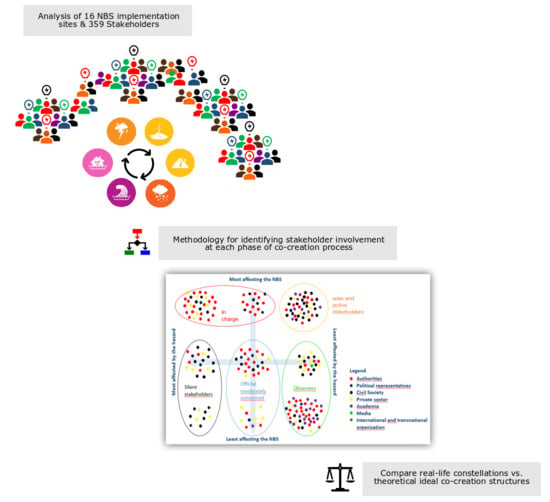Stakeholder Mapping to Co-Create Nature-Based Solutions: Who Is on Board?
Abstract
1. Introduction
- Which stakeholders and stakeholder types are or should be part of the collaborative planning process that leads to NBS co-design and implementation?
- Do these real-life constellations reflect theories on the ideal structure of co-creation?
- How does a systematic stakeholder mapping method support the initiation of participative planning?
2. Materials and Methods
2.1. Case Sites
2.2. Stakeholder Identification
2.3. Stakeholder Characteristics
- Belonging: this variable describes the case study site the stakeholder belongs, their institution, as well as which stakeholder group the stakeholder represents. Stakeholder groups represent different sections of society: governmental authorities, political representatives, civil society, private sector, academia and research sector, media, and international and transnational organization. Each stakeholder can only represent one group at a time.
- Role of stakeholders: Each stakeholder can have different roles [40]. The decision-makers make and execute decisions. The implementers are responsible for the execution or implementation. The facilitators coordinate a variety of actors for the design, implementation, and monitoring of measures. The providers of expert knowledge are mostly consultants, universities, insurance companies, as well as local informants from civil society. The funders or sponsors can be private, governmental, or non-governmental, and finance activities and measures. The lobbyists refer to stakeholders or group representatives who attempt to influence decision-making. The mediators or facilitators mediate and facilitate communication between different stakeholders. While stakeholders can only represent one group, it is possible for them to have several roles. Stakeholder roles vary across contexts.
- Planning stage: this variable describes the different NBS project steps. The importance of various stakeholders in different steps from design, planning, implementation, monitoring, and evaluating, as well as regular maintenance, can vary. Even when striving for broad involvement of different stakeholders during all phases, this evaluation can help to determine and better understand participants varying motivation to participate and resulting potential different levels of willingness to engage and act, their relative power, influence, and interests during the different stages of such a co-creation process.
- Relation to the hazards: It is also important to look at the relation of stakeholders to NBS, different NBS planning processes, and potential offsets and trade-offs. This category aims to differentiate between stakeholders who are affected by natural hazards and those who are affecting natural hazards. For example, stakeholder groups are affected in different ways, and property owners can, for example, be threatened by floods [41]. On the other hand, individual stakeholders can have the ability to reduce or mitigate natural hazards (e.g., forest owners and their forest management) [42].
- Relation to the NBS: While some stakeholders might be affected by a selected solution to reduce risks, others might not benefit from a measure (e.g., a landowner being expropriated to build a retention basin to protect a village downstream or farmer asked to change land use to enable regular flooding) [42]. This analysis also helps to determine the ability of different stakeholders to influence the decision on potential NBS or traditional grey engineering solutions. Besides, some stakeholders might not have the power to influence all of the phases but might be influential in the implementation phase, intervene, and halt the implementation of NBS.
2.4. Analysis
3. Results
3.1. Overall Stakeholder Constellation Description
3.2. Role Distribution between the Stakeholder Groups
3.3. Relationship between Stakeholders Role and Implication, and Their Relation to the Hazards and the Solution
3.4. Stakeholder Types
4. Discussion
4.1. The Stakeholders Involved in Collaborative Planning of NBS
4.2. Mapped Stakeholder Constellations and Collaborative Planning Theories
4.3. Systematic Stakeholder Mapping Method to Support Collaborative Planning Initiation
5. Conclusions
Author Contributions
Funding
Acknowledgments
Conflicts of Interest
References
- Wantzen, K.M.; Ballouche, A.; Longuet, I.; Bao, I.; Bocoum, H.; Cissé, L.; Chauhan, M.; Girard, P.; Gopal, B.; Kane, A.; et al. River Culture: An eco-social approach to mitigate the biological and cultural diversity crisis in riverscapes. Ecohydrol. Hydrobiol. 2016, 16, 7–18. [Google Scholar] [CrossRef]
- Walsh, C.J.; Roy, A.H.; Feminella, J.W.; Cottingham, P.D.; Groffman, P.M.; Morgan, R.P. The urban stream syndrome: Current knowledge and the search for a cure. J. N. Am. Benthol. Soc. 2005, 24, 706–723. [Google Scholar] [CrossRef]
- Vörösmarty, C.J.; McIntyre, P.B.; Gessner, M.O.; Dudgeon, D.; Prusevich, A.; Green, P.; Glidden, S.; Bunn, S.E.; Sullivan, C.A.; Liermann, C.R.; et al. Global threats to human water security and river biodiversity. Nature 2010, 467, 555–561. [Google Scholar] [CrossRef] [PubMed]
- Ruangpan, L.; Vojinovic, Z.; Di Sabatino, S.; Leo, L.S.; Capobianco, V.; Oen, A.M.P.; McClain, M.E.; Lopez-Gunn, E. Nature-based solutions for hydro-meteorological risk reduction: A state-of-the-art review of the research area. Nat. Hazards Earth Syst. Sci. 2020, 20, 243–270. [Google Scholar] [CrossRef]
- EC. Nature-Based Solutions & Re-Naturing Cities; European Commission: Brussel, Gelgium, 2015; p. 74. [Google Scholar]
- IPBES. Summary for Policymakers of the Global Assessment Report on Biodiversity and Ecosystem Services of the Intergovernmental Science-Policy Platform on Biodiversity and Ecosystem Services; IPBES: Bonn, Germany, 2019; p. 56. [Google Scholar]
- Cohen-Shacham, E.; Andrade, A.; Dalton, J.; Dudley, N.; Jones, M.; Kumar, C.; Maginnis, S.; Maynard, S.; Nelson, C.R.; Renaud, F.G.; et al. Core principles for successfully implementing and upscaling Nature-based Solutions. Environ. Sci. Policy 2019, 98, 20–29. [Google Scholar] [CrossRef]
- Raymond, C.M.; Frantzeskaki, N.; Kabisch, N.; Berry, P.; Breil, M.; Nita, M.R.; Geneletti, D.; Calfapietra, C. A framework for assessing and implementing the co-benefits of nature-based solutions in urban areas. Environ. Sci. Policy 2017, 77, 15–24. [Google Scholar] [CrossRef]
- EC. Call for Ideas for Large-Scale Demonstration Projects—Outcome Report Horizon 2020 ‘Climate Action, Environment, Resource Efficiency and Raw Materials’; European Commission: Brussel, Belium, 2015; p. 21. [Google Scholar]
- Frantzeskaki, N.; McPhearson, T.; Collier, M.J.; Kendal, D.; Bulkeley, H.; Dumitru, A.; Walsh, C.; Noble, K.; van Wyk, E.; Ordóñez, C.; et al. Nature-Based Solutions for Urban Climate Change Adaptation: Linking Science, Policy, and Practice Communities for Evidence-Based Decision-Making. BioScience 2019, 69, 455–466. [Google Scholar] [CrossRef]
- Ershad Sarabi, S.; Han, Q.L.; Romme, A.G.; de Vries, B.; Wendling, L. Key Enablers of and Barriers to the Uptake and Implementation of Nature-Based Solutions in Urban Settings: A Review. Resources 2019, 8, 121. [Google Scholar] [CrossRef]
- Zingraff-Hamed, A.; Schröter, B.; Schaub, S.; Lepenies, R.; Stein, U.; Hüesker, F.; Meyer, C.; Schleyer, C.; Schmeier, S.; Pusch, M. Perception of Bottlenecks in the implementation of the European Water Framework Directive. Water Altern. 2020, in press. [Google Scholar]
- Ostrom, E. Coping with tragedies of the commons. Annu. Rev. Political Sci. 1999, 2, 493–535. [Google Scholar] [CrossRef]
- Feldman, D. Polycentric Governance; Bainbridge, W.S., Roco, M.C., Eds.; Springer International Publishing: Cham, Switzerland, 2016; pp. 877–890. [Google Scholar]
- Arnouts, R.; van der Zouwen, M.; Arts, B. Analysing governance modes and shifts—Governance arrangements in Dutch nature policy. For. Policy Econ. 2012, 16, 43–50. [Google Scholar] [CrossRef]
- Zingraff-Hamed, A.; Martin, J.; Lupp, G.; Linnerooth-Bayer, J.; Pauleit, S. Designing a Resilient Waterscape Using a Living Lab and Catalyzing Polycentric Governance. Landsc. Archit. Front. 2019, 7, 12–31. [Google Scholar]
- Wuijts, S.; Driessen, P.P.J.; Van Rijswick, H.F.M.W. Towards More Effective Water Quality Governance: A Review of Social-Economic, Legal and Ecological Perspectives and Their Interactions. Sustainability 2018, 10, 914. [Google Scholar] [CrossRef]
- Lee, M. Law and governance of water protection policy. In EU Environmental Governance; Scott, J., Ed.; Oxford University Press: Oxford, UK, 2009. [Google Scholar]
- Zingraff-Hamed, A.; Hüesker, F.; Albert, C.; Brillinger, M.; Huang, J.; Lupp, G.; Scheuer, S.; Schlätel, M.; Schröter, B. Governance Models for Nature-based Solutions: Cases from Germany. Ambio. under review.
- Fohlmeister, S.; Zingraff-Hamed, A.; Lupp, G.; Pauleit, S. Guiding Framework for Tailored Living Lab Establishment at Concept and Demonstrator Case Study Sites. Deliverable 3.1. PHUSICOS. H2020 Grant Agreement No. 776681; ETH Zurich: Zürich, Switzerland, 2018; p. 68. [Google Scholar]
- Hüesker, F.; Begg, C.; Kuhlicke, C.; Barquet, K.; Segnetsam, L. Preparing Co-Creation: Stakeholder Analysis; RECONECT: Brusel, Belgium, 2019; Volume D2.1, p. 152. [Google Scholar]
- Leminen, S. Coordination and Participation in Living Lab Networks. Technol. Innov. Manag. Rev. 2013, 3, 5–14. [Google Scholar] [CrossRef]
- Arnstein, S.R. A ladder of citizen participation. J. Am. Inst. Plan. 1969, 35, 216–224. [Google Scholar] [CrossRef]
- Ambrose-Oji, B.; Buijs, A.; Gerőházi, E.; Mattijssen, T.; Száraz, L.; Van der Jagt, A.; Hansen, R.; Rall, E.; Andersson, E.; Kronenberg, J.; et al. Innovative Governance for Urban Green Infrastructure: A Guide for Practitioners; University of Copenhagen: Brussel, Belgium, 2017; p. 92. [Google Scholar]
- Tress, B.; Tress, G.; Fry, G. Defining concepts and the process of knowledge production. In From Landscape Research to Landscape Planning: Aspects of Integration, Education and Application; Tress, B., Tress, G., Fry, G., Opdam, P., Eds.; Springer: Berlin/Heidelberg, Germany, 2006; pp. 13–26. [Google Scholar]
- Cohen-Shacham, E.; Walters, G.; Janzen, C.; Maginnis, S. Nature-Based Solutions to Address Global Societal Challenges; International Union for Conservation of Nature: Gland, Switzerland, 2016. [Google Scholar]
- Burgers, P.; Farida, A. Community Management for Agro-Reforestation Under a Voluntary Carbon Market Scheme in West Sumatra. In Co-Investment in Ecosystem Services: Global Lessons from Payment and Incentive Schemes; Namirembe, S., Leimona, B., van Noordwijk, M., Minang, P., Eds.; World Agroforestry Centre: Nairobi, Kenya, 2017. [Google Scholar]
- Steen, K.; van Bueren, E. Urban Living Labs. A living Lab Way of Working; Amsterdam Institute for Advanced Metropolitan Solutions, Delft University of Technology: Amsterdam, Netherland, 2017. [Google Scholar]
- Steen, K.; van Bueren, E. The Defining Characteristics of Urban Living Labs. Technol. Innov. Manag. Rev. 2017, 7, 21–23. [Google Scholar] [CrossRef]
- Ostrom, E. Understanding Institutional Diversity; Princeton University Press: Princeton, NJ, USA, 2005. [Google Scholar]
- Ostrom, E. A General Framework for Analyzing Sustainability of Social-Ecological Systems. Sciences 2009, 325, 419–422. [Google Scholar] [CrossRef]
- Birkmann, J.; Buckle, P.; Jaeger, J.; Pelling, M.; Setiadi, N.; Garschagen, M.; Fernando, N.; Kropp, M.J. Extreme events and disasters: A window of opportunity for change? Analysis of organizational, institutional and political changes, formal and informal responses after mega-disasters. Nat. Hazards 2010, 55, 637–655. [Google Scholar] [CrossRef]
- Zingraff-Hamed, A.; Egger, G. Isar. In Rivers of the Alps—Diversity in Nature and Culture; Muhar, S., Muhar, A., Siegrist, D., Egger, G., Eds.; Haupt, 2019; Volume 1, p. 512. [Google Scholar]
- Luyet, V.; Schlaepfer, R.; Parlange, M.B.; Buttler, A. A framework to implement Stakeholder participation in environmental projects. J. Environ. Manag. 2012, 111, 213–219. [Google Scholar] [CrossRef]
- Nystrom, A.G.; Leminen, S.; Westerlund, M.; Kortelainen, M. Actor roles and role patterns influencing innovation in living labs. Ind. Mark. Manage. 2014, 43, 483–495. [Google Scholar] [CrossRef]
- Martin, J.; Bayer, J.; Liu, W.; Scolobig, A. Delivrable 5.1: NBS in-Depth Case Study Analysis of the Characteristics of Successful Governance Models; EU: Vienna, Austria, 2019. [Google Scholar]
- Stake, R.E. Qualitative Case Studies. In The Sage Handbook of Qualitative Research, 3rd ed.; Sage Publications Ltd.: Thousand Oaks, CA, USA, 2005; pp. 443–466. [Google Scholar]
- Crowe, S.; Cresswell, K.; Robertson, A.; Huby, G.; Avery, A.; Sheikh, A. The case study approach. BMC Med Res. Methodol. 2011, 11, 100. [Google Scholar] [CrossRef] [PubMed]
- Reed, M.; Graves, A.; Dandy, N.; Posthumus, H.; Hubacek, K.; Morris, J.; Prell, C.; Quinn, C.; Stringer, L. Who‘s in and why? A typology of stakeholder analysis methods for natural resource management. J. Environ. Manag. 2009, 90, 1933–1949. [Google Scholar] [CrossRef] [PubMed]
- Begg, C. Power, responsibility and justice: A review of local stakeholder participation in European flood risk management. Local Environ. 2018, 23, 383–397. [Google Scholar] [CrossRef]
- Murray-Webster, R.; Simon, P. Connecting the World of Project Management- Making Sense of Stakeholder Mapping. PM World Today 2006, 8, 1–5. [Google Scholar]
- Gower, J.C. A general coefficient of similarity and some of its properties. Biometrics 1971, 27, 857–874. [Google Scholar] [CrossRef]
- Li, D. Basic R Guide for NSC Statistics; Bookdown; Available online: https://bookdown.org/dli/rguide/ (accessed on 16 October 2020).
- Husson, F.; Le, S.; Pages, J. Exploratory Multivariate Analysis by Example Using R, 2nd ed.; CRC Press: Boca Raton, FL, USA, 2017. [Google Scholar]
- Le, S.; Josse, J.; Husson, F. FactoMineR: A Package for Multivariate Analysis. J. Stat. Softw. 2008, 25, 1–18. [Google Scholar] [CrossRef]
- Canzler, W.; Engels, F.; Rogge, J.C.; Simon, D.; Wentland, A. From “living lab” to strategic action field: Bringing together energy, mobility, and Information Technology in Germany. Energy Res. Soc. Sci. 2017, 27, 25–35. [Google Scholar] [CrossRef]
- Gadille, M.; Siarheyeva, A. Limits to the Construction of an open Innovation Network: The Case of Pre-Setup of a Living Lab in a Small Urban Area; Ikam-Inst Knowledge Asset Management: Matera, Italy, 2013; pp. 2026–2046. [Google Scholar]
- Concilio, G. Urban Living Labs: Opportunities in and for Planning; Springer International Publishing Ag: Cham, Switzerland, 2016; pp. 21–40. [Google Scholar]
- Ståhlbröst, A.; Padyab, A.; Sällström, A.; Hollosi, D. Design of Smart City Systems from a privacy perspective. IADIS Int. J. 2015, 13, 1–16. [Google Scholar]
- Leminen, S.; Westerlund, M.; Nyström, A.-G. Living Labs as Open-Innovation Networks. Technol. Innov. Manag. Rev. 2012, 2, 6–11. [Google Scholar] [CrossRef]
- Celata, F.; Coletti, R. Enabling and disabling policy environments for community-led sustainability transitions. Reg. Environ. Chang. 2019, 19, 983–993. [Google Scholar] [CrossRef]
- Rist, S.; Chidambaranathan, M.; Escobar, C.; Wiesmann, U.; Zimmermann, A. Moving from sustainable management to sustainable governance of natural resources: The role of social learning processes in rural India, Bolivia and Mali. J. Rural Stud. 2007, 23, 219–237. [Google Scholar] [CrossRef]
- Reed, M.S. Stakeholder participation for environmental management: A literature review. Biol. Conserv. 2008, 141, 2417–2431. [Google Scholar] [CrossRef]
- Engels, A.; Walz, K. Dealing with Multi-Perspectivity in Real-World Laboratories. Experiences from the Transdisciplinary Research Project Urban Transformation Laboratories. Gaia 2018, 27, 39–45. [Google Scholar] [CrossRef]
- Dvarioniene, J.; Gurauskiene, I.; Gecevicius, G.; Trummer, D.R.; Selada, C.; Marques, I.; Cosmi, C. Stakeholders involvement for energy conscious communities: The Energy Labs experience in 10 European communities. Renew. Energy 2015, 75, 512–518. [Google Scholar] [CrossRef]
- Van der Jagt, A.; Anton, B.; Reil, A.; DeBellis, Y.; Fischer, L.; Kowarik, I.; Cvejić, R.; Mårsén, A. Cities and Researchers Learning Together: What does it Take? Evaluating the Process of Iterative Knowledge Exchange and Outcomes Generated in Each of the Urban Learning Labs and Learning Alliances. GREEN SURGE Deliverable 8.7; GREEN SURGE: Brussel, Belgium, 2017; p. 63 (SF). [Google Scholar]
- Menny, M.; Voytenko Pagan, Y.; McCormick, K. Urban Living Labs and the Role of Users in Co-Creation. Gaia 2018, 27, 68–77. [Google Scholar] [CrossRef]
- Naumann, S.; Kaphengst, T. Erfolgsfaktoren bei der Planung und Umsetzung Naturbasierter Ansätze zum Klimaschutz und zur Anpassung an den Klimawandel; BFN: Bonn, Germany, 2015; p. 24. [Google Scholar]
- Pregernig, M.; Rhodius, R.; Winkel, G. Design Junctions in Real-World Laboratories. Analyzing Experiences gained from the Project Knowledge Dialogue Northern Black Forest. Gaia 2018, 27, 32–38. [Google Scholar] [CrossRef]
- Rossano, F. Isar Plan: The Wild as the New Urban? Contour 2016, 1, 20. [Google Scholar]
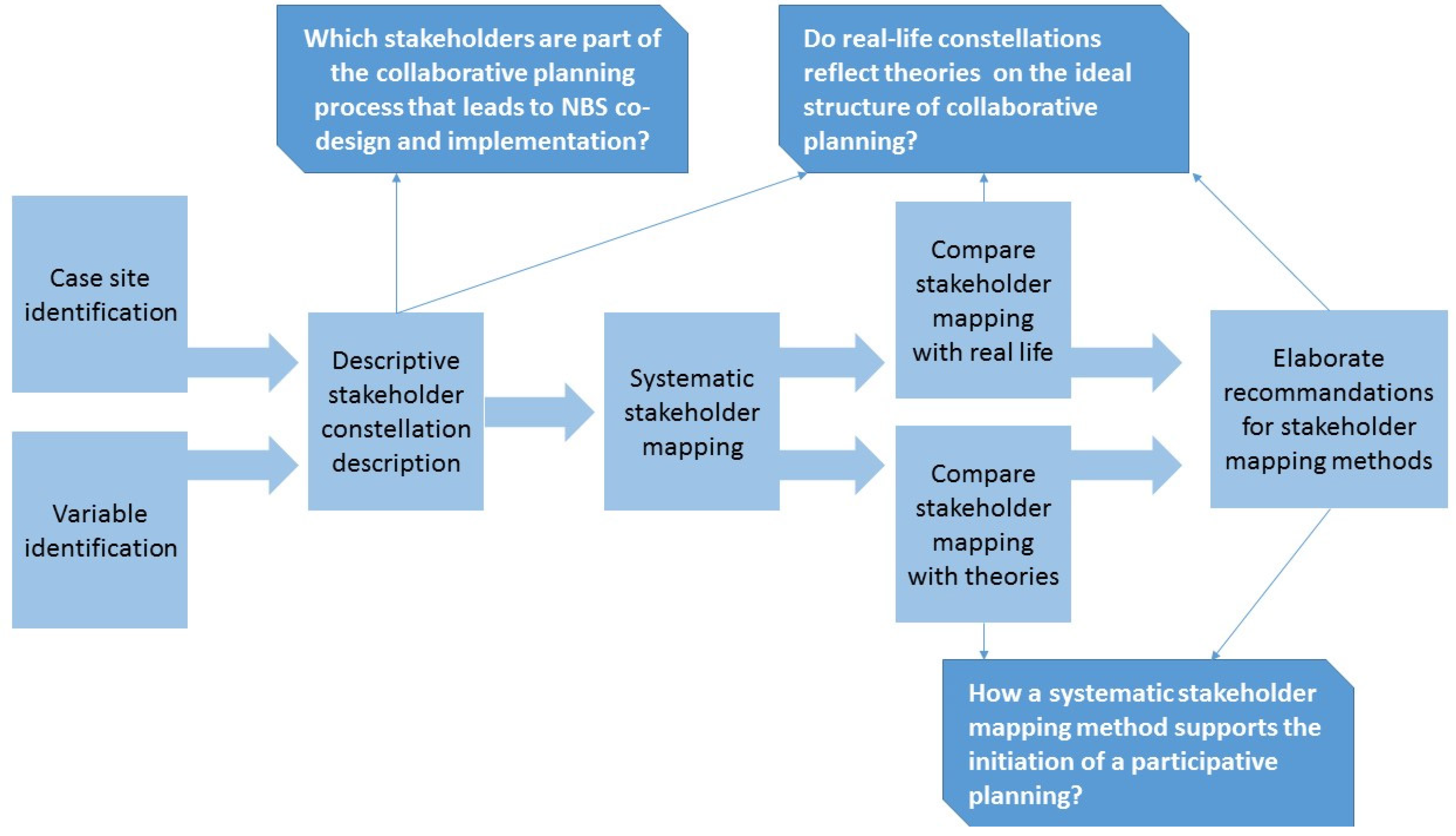
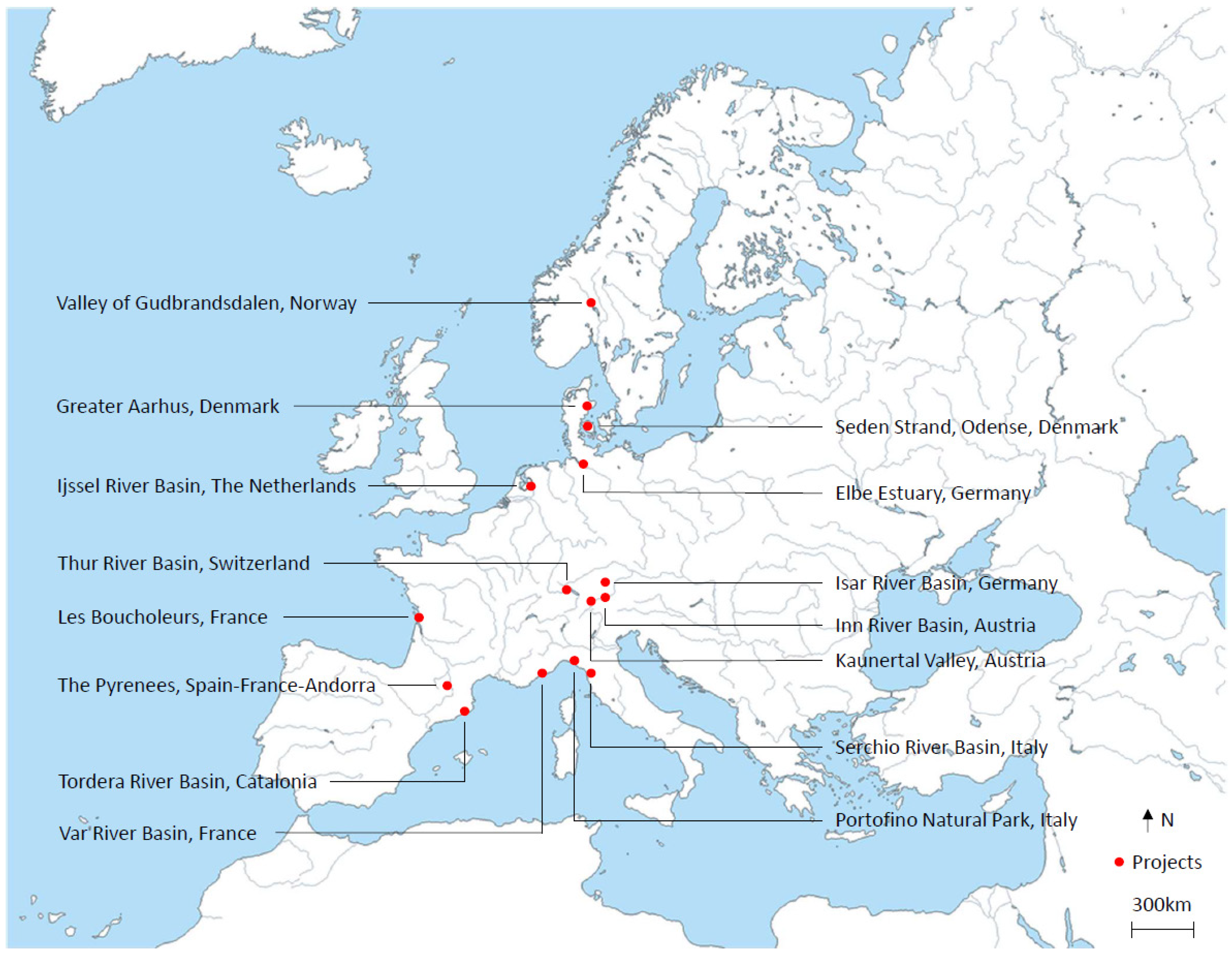
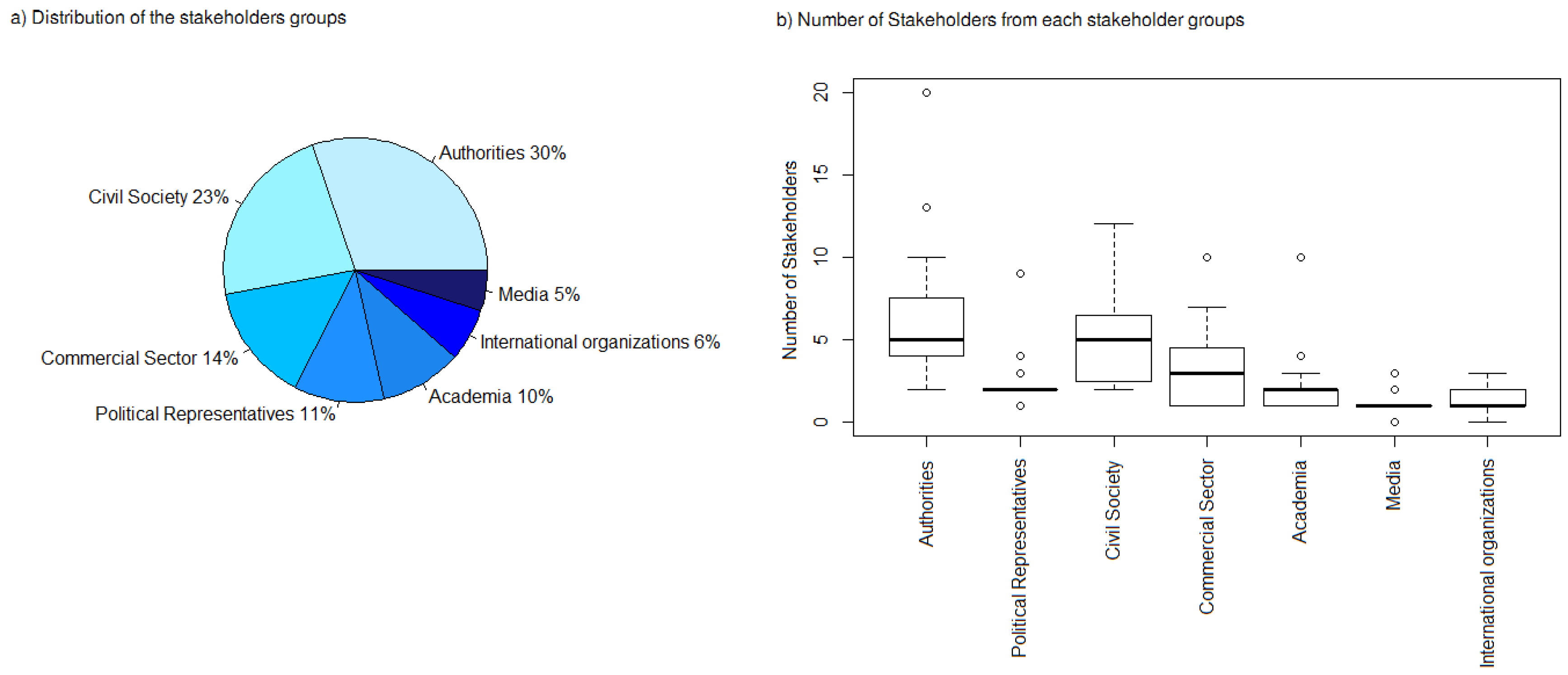
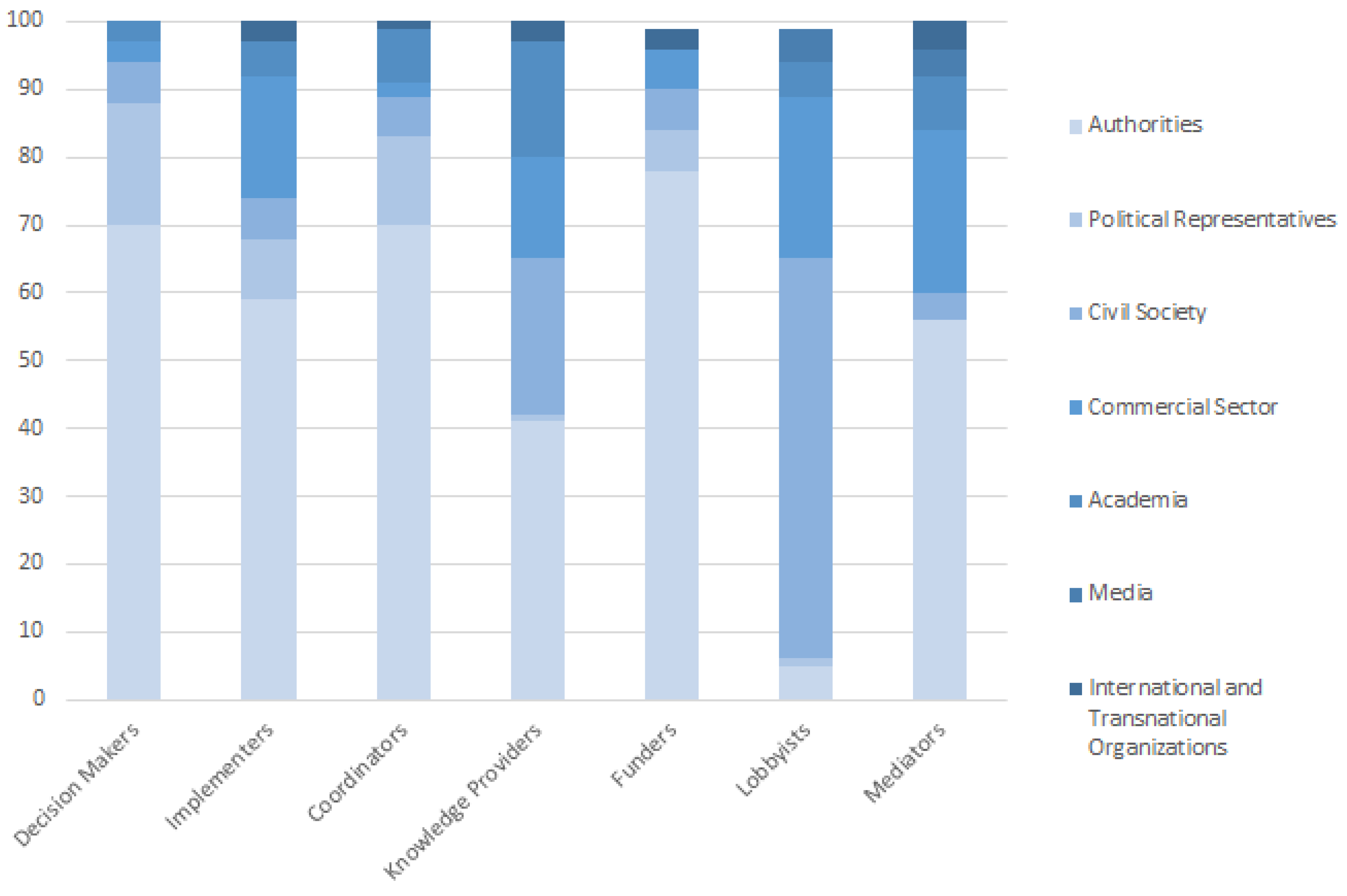
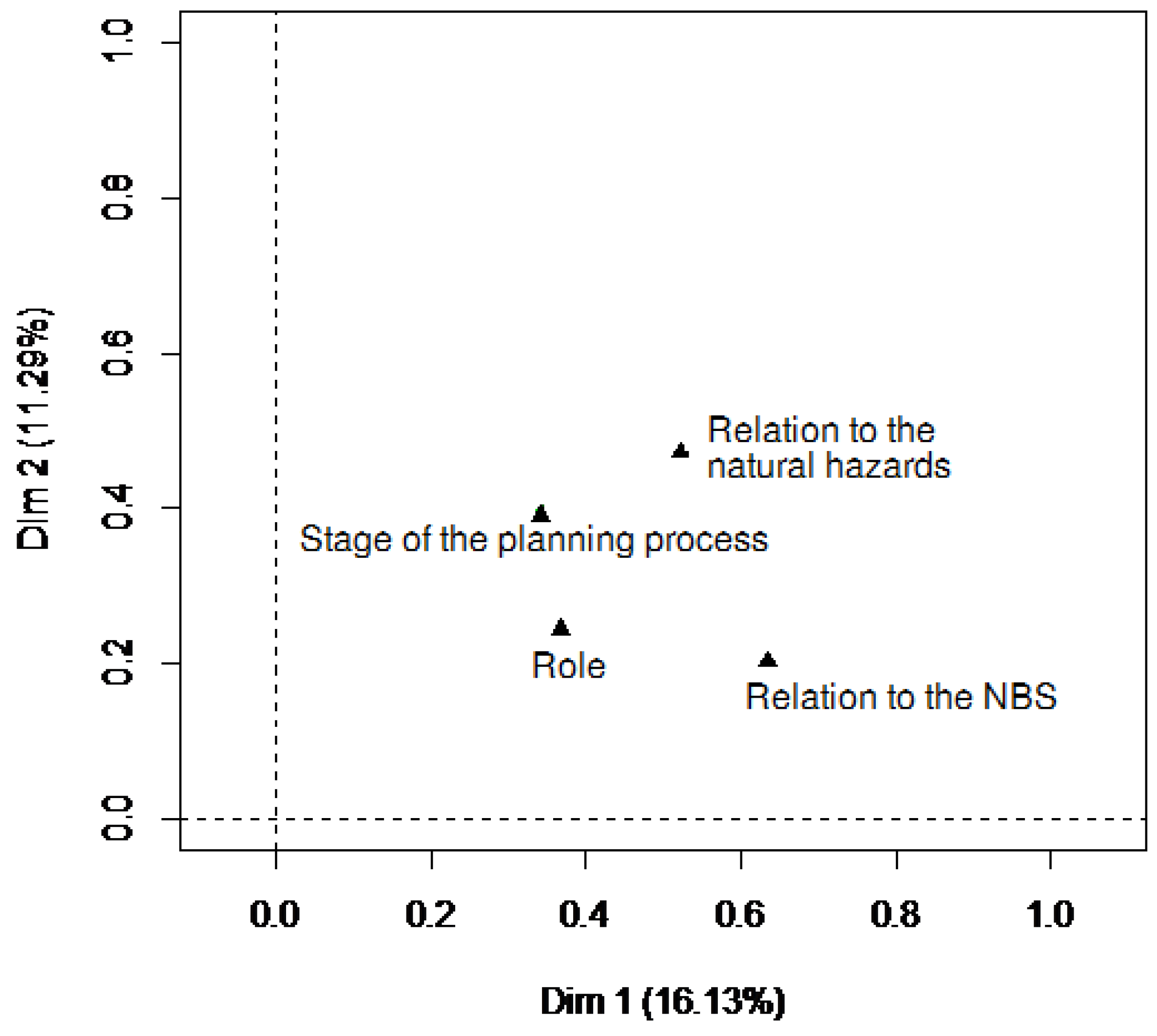
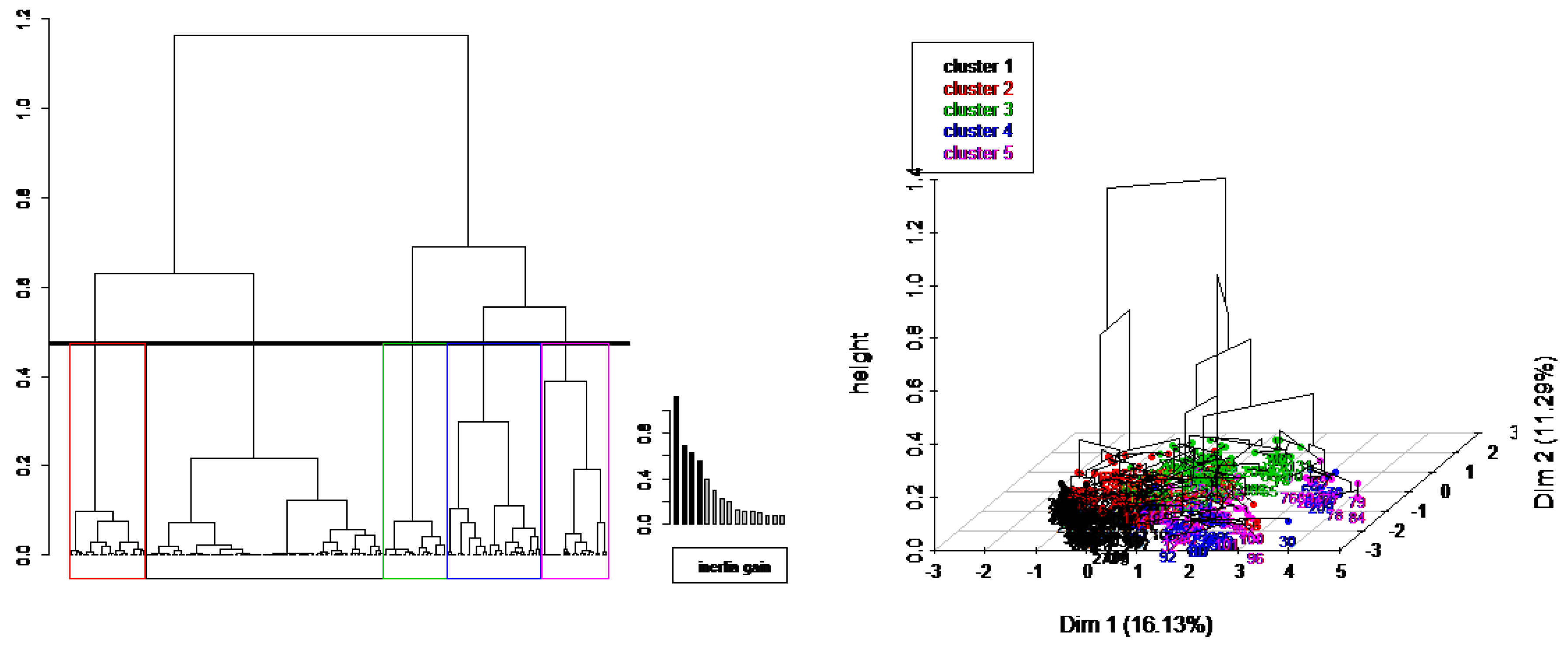

| Case Label | Risk | Country | Related Research Project | Description |
|---|---|---|---|---|
| Greater Aarhus | Coastal flooding | Denmark | RECONECT | Lystrup is at risk of flooding due to its vicinity to the river Egå catchment and the Lake Egå, a shallow lake surrounded by grassland. The NBS was initiated after an extreme rain event in 2012, which flooded critical infrastructures (i.e., the highway) and private properties. The planned NBS is a wetland recreation space at Lake Egå, reducing the flood risk while also reducing the nitrogen supply to Aarhus Bay, thereby improving the health of the natural environment in and around the Egå valley and providing a recreational area to residents and tourists. |
| Bargèse Forest | Rockfall, landslides, avalanches, pluvial flooding | France | PHUSICOS | The location faces two risks induced by extreme rain events: flooding from the Bastan River and rockfalls due to erosion. Hydro-meteorological risks are particularly severe, impacting critical infrastructure by blocking road access to the village and skiing resort of Barèges. The NBS uses reforestation of the catchment area and in-stream measures to mitigate hydro-climatic extreme events by reducing the hazard intensity. Reforestation is also expected to provide co-benefits by increasing the storage of carbon dioxide as well as supporting biodiversity. |
| Les Boucholeurs | Coastal flooding | France | RECONECT | A large storm called Xynthia occurred in 2010. This storm caused 6-meter high waves, killing 6 people, flooding 600 homes, and affecting the local economy through the disruption of the local oyster farms. The storm resulted in policy changes. Flooded areas were reclassified, prohibiting new dwellings but conserving existing buildings. Local municipalities (Châtelaillon-Plage, Yves, Aix, and Fouras) came together to implement a flood risk management strategy. The NBS, in this case, comprised a mixture of gray and green measures. Existing flood walls were reinforced and raised, but no new gray measures were built. Instead, green measures were identified to help manage the residual risk. Specifically, the oyster farms were converted into retention areas for river and groundwater flooding. The retention capacity of marshland was also increased and protected by being designated as a Natura 2000 protected area. |
| Elbe Estuary | Coastal and pluvial flooding, drought | Germany | RECONECT | The site is at risk of both droughts and floods. On the one hand, flood intensity and frequency have increased, resulting in high water levels and floods along the river Elbe and the North Sea. On the other hand, rainfall has decreased, and this causes drought, which places pressure on the water infrastructure, which services the city. This NBS focuses on the development and implementation of water retention areas located at the Dove/Gose Elbe to address both the risk of flooding and drought. The hope is that both risks can be dealt with by using the same measures by providing innovative, smart water management practices. |
| Ijssel River Basin | Pluvial flooding | Netherlands | RECONECT | The NBS was funded as part of the “Room for the River” Programme (“Ruimte voor de Rivier”-PKRR 2006). The NBS consisted of roughly 300 ha of vegetation along approximately 130 km of the river. The aim of the project was to remove vegetation from the river’s summer bed in order to increase the velocity of the water traveling from the mountains to the sea. The project began in 2014 and was completed in 2018. Specifically, the aim was to remove 70% of the vegetation within the project area. |
| Inn River Basin | Pluvial flooding | Austria | RECONECT | The overall catchment (~5700 km2) comprises of the two streams, which flow into the Inn River, the Geroldsbach (12 km2), and the Marbach (1.2 km2). The aim of the NBS is to complete the upstream part of the Geroldsbach to avoid flood in the municipality of Götzens. This case comprises different types of NBS, which are currently being installed or have already been completed in this area since the early 1950s. The NBS includes afforestation of high-altitude areas, buffer strips and hedges along watercourses, greening, and forest management. |
| Isar River Basin | Pluvial flooding | Germany | PHUSICOS | The Isar River is one of the main rivers in Bavaria and is a tributary of the Danube River. It drains part of the Karwendel Mountains in the Alps, and heavy rain events in the years of 1999, 2005, and 2013 led to major flood events. Climate change is predicted to increase extreme rain in summer, leading to higher flood risks. The Isar River restoration aims to increase flood protection, recreational uses, and ecological quality. |
| Kaunertal Valley | Erosion, landslide | Austria | PHUSICOs | The ‘Gepatschferner’ glacier is a fast-melting glacier, and its rapid retreat has resulted in unconsolidated open sediments without vegetation cover, causing a decrease in the stability of the mountain slopes and an increased risk of rockfall, debris flows, and landslides. These risks threaten roads and critical infrastructure, such as a reservoir lake. The NBS aims to achieve slope stabilization through the planting of mountainous species that have improved soil retention capacities by bacteria and fungi. |
| Seden Strand, Odense | Coastal flooding | Denmark | RECONECT | Approximately 300 people reside in the 142 houses and three farms at this site. With the exception of farming, there are no other commercial or industrial activities at this site. However, critical infrastructure, such as electricity and wastewater, operate in the area. The site is at risk of coastal flooding, which is occurring more frequently in the past decades, causing large amounts of damage. This risk is predicted to increase in the future due to climate change. High tides combined with strong winds from the north can result in flooding of properties and the surrounding agricultural land. The NBS here is to deconstruct the old gray dyke at the shore and to reconstruct it in a greener way and lower inside the island while compensating farmers for allowing their land to flood frequently. This NBS is aimed at protecting the settlement of Seden Strandby from flooding, and at the same time, creating the co-benefits of increasing biodiversity, improving the recreational opportunities in the area, and securing the open coastal landscape by avoiding technical installations, such as large coastal dikes. |
| Portofino Park | Coastal storms, flash flooding, and erosion/landslides | Italy | RECONECT | As a result of the increasing frequency of extreme weather events over the last ten years, efforts have been made to reduce those risks through NBS. The NBS is located in a newly proposed national park. Due to the national park status of the site, NBS is perceived as a promising alternative to gray measures. The NBS focuses on the restoration of ancient agricultural terraces and reforestation in order to mitigate erosion and storm damage. |
| Portalet Forest | Rockfall, landslides, pluvial flooding, avalanches | France, Spain | PHUSICOS | The road connecting France and Spain is highly exposed to rockfall, landslides, and also flooding. Systematic reforestation of the slopes and the catchment areas, as well as further structural NBS, will reduce these risks to critical infrastructures, such as settlements, roads, and high power lines. |
| Serchio River Basin | Pluvial flooding and erosion | Italy | PHUSICOS | While the drought risk at Massaciuccoli Lake has been addressed through the design and implementation of a diversion channel, NBS measures are planned in order to mitigate the effects of climate change and, at the same time, create the co-benefit of increased biodiversity, a reduction in nutrient and soil runoff from agricultural land, and the improvement of water quality. The NBS also includes restoration and revegetation efforts, the inclusion of buffer strips and sediment retention basins, as well as reforestation through multiple vegetation layers to reduce the risk of landslides and runoff-induced erosion. |
| Gudbrandsdalen valley in Skjåk | Pluvial flooding, landslides | Norway | PHUSICOS | During recent years, a number of severe weather events have triggered landslides and flash floods. The goal of the Living Lab process is to find nature-based solutions, which include riverbank restoration and/or reduction in erosion and sediment transport. This is to reduce the risk of flooding for the settlements and infrastructure, as well as create the co-benefits of enhanced ecosystem biodiversity, protection of fish stocks, and the increase of recreational potentials. |
| Thur River Basin | Pluvial flooding | Switzerland | RECONECT | In 2012, federal law required river revitalization in Switzerland. Several projects have been implemented along the Thur River. The NBS combines gray structural measures with green measures, such as river restoration, to enhance flood protection while achieving the co-benefits of restored ecological functions and reduce erosion of the riverbed. |
| Tordera River Basin | Pluvial flooding | Spain | RECONECT | Blanes and Malgrat de Mar are located on the opposite side of the Tordera River mouth and are both at risk of storm surges and river flooding. Since 2016, campsites located on both sides of the river and are at extremely high risk to the point that they are no longer allowed to be located in the designated risk area. Outside this area, protection measures to protect campsites for the 500 years return period flood need to be implemented if they are to remain in this location. The focus of the NBS is mainly water storage areas and the setback of levees for reconnecting rivers and floodplains. The Tordera River Basin management plan also includes the restoration of Tordera River tributaries located in the municipality of Tordera to enable water diversion from the main river in case of flooding to reduce flood risk of housing areas. |
| Var River Basin | Pluvial flooding | France | RECONECT | The Var valley is exposed to several types of risks like floods, forest fires, earthquakes, and landslides. The implemented NBS is a combination of gray, blue, and green infrastructure, e.g., “green dikes” create a floodplain, which also promotes wetland habitats. Inside the green flood protection infrastructure, the river runs freely and creates biodiverse habitats. |
| Category | Variables | Modalities |
|---|---|---|
| Belonging | Case | Case label (see Table 1) |
| Stakeholder group | Governmental authorities (SH1) | |
| Political representatives (SH2) | ||
| Civil society (SH3) | ||
| Private sector (SH4) | ||
| Academia and research sector (SH5) | ||
| Media (SH6) | ||
| International and transnational organization (SH7) | ||
| Institution | free text | |
| Role of Stakeholders | Decision-makers | Yes or No |
| Implementers | Yes or No | |
| Coordinators | Yes or No | |
| Providers of expert knowledge | Yes or No | |
| Funders/Sponsors | Yes or No | |
| Lobbyists | Yes or No | |
| Mediators | Yes or No | |
| NBS project stage | Assessment and planning | Yes or No |
| Design | Yes or No | |
| Implementation | Yes or No | |
| Operation and Maintenance | Yes or No | |
| Monitoring | Yes or No | |
| Evaluation | Yes or No | |
| Relation to the hazards | Affected by natural hazards | Least, Moderate, Most |
| Affecting natural hazards | Least, Moderate, Most | |
| Relation to the NBS | Affected by NBS | Least, Moderate, Most |
| Affecting the NBS | Least, Moderate, Most |
| Relation to the Hazard | Relation to the Solution | |||
|---|---|---|---|---|
| Affected by the Natural Hazards | Affecting Natural Hazards | Affected by the Solution | Affecting the Solution | |
| Role of the Stakeholder | ||||
| Decision-makers (25% the SH) | 50% are SH the least affected by the hazards | 22% are SH the most affecting the hazard | NS | 50% are SH the most affecting the NBS |
| Implementers (26% of the SH) | NS | 50% are SH the least affecting the hazard 25% are SH the most affecting the hazards | NS | NS |
| Coordinators (17% of the SH) | NS | 40% are SH the least affecting the hazard | NS | 43% are SH the most affecting the solution |
| Knowledge providers (46% of the SH) | 78% are SH the least affected by the hazards 30% are SH the most affected by the hazards | 60% are SH the least affecting the natural hazards | NS | 60% are SH the most affecting the NBS |
| Funders (10% of the SH) | NS | 40% are SH the most affecting the hazard | NS | 50% are SH the most affecting the NBS |
| Lobbyists (25% of the SH) | NS | 70% are SH the least affecting the hazard | 40% are SH the most affected by the NBS | 30% are SH the most affecting the NBS |
| Mediators (8% of the SH) | NS | NS | 40% are SH the least affecting the NBS | |
| NBS Project Stage | ||||
| SH participating at the Preliminary Assessment and Planning (54% of the SH) | NS | NS | NS | 77% are SH the most affecting the solution |
| SH participating at the Design (45% of the SH) | 74% are SH the least affected by the hazard | NS | 65% are the most affected by the solution | 70% are SH the most affecting the solution |
| SH participating at the Implementation (40% of the SH) | NS | 60% are SH the most affecting the hazard | NS | NS |
| SH participating at the Monitoring (27% of the SH) | NS | NS | NS | 22% are SH the least affecting the NBS |
| SH participating in the Evaluation (41% of the SH) | 71% are SH the least affected by the hazard | NS | NS | 60% are SH the most or moderately affecting the NBS |
| SH participating at the Maintenance (18% of the SH) | NS | 50% are SH the least affecting the hazard | NS | 40% are SH the most affecting the NBS |
| Types | Characteristics of the Type | Characteristics of the Stakeholders | |
|---|---|---|---|
| …composed the type. | They represent… | …of the Stakeholder that are … | |
| 1: Observers | 68% | 99% | The least affected by the hazards |
| 67% | 94% | The least affecting the hazards | |
| 68% | 88% | The least affected by the solution | |
| 67% | 74% | The least affecting the solution | |
| 87% | 87% | Not decision-makers | |
| 96% | 48% | Not funders | |
| 100% | NS | Media and international or transnational organizations | |
| 75% | NS | Academia | |
| 2: Officials moderately concerned | 95% | 87% | Moderately affected by the hazards |
| 42% | 36% | Moderately affected by the solution | |
| NS | 91% | Not involved in the maintenance | |
| NS | 82% | Not involved in the design | |
| 22% | 51% | Authorities | |
| 32% | NS | Political representatives | |
| 3: Silent stakeholders | 72% | 92% | The most affected by the hazards |
| 47% | 84% | The most affected by the solution | |
| 24% | 82% | Not knowledge providers | |
| 20% | 94% | Not involved in the implementation | |
| 20% | 98% | Not coordinator | |
| 20% | 86% | Not involved in the monitoring | |
| 22% | 62% | Not involved in the planning and the design | |
| 28% | 42% | Civil society | |
| 27% | 26% | Private sector | |
| 4: Wise and active stakeholders | 40% | 77% | Moderately affecting the hazards |
| 25% | 97% | Knowledge provider | |
| 24% | 97% | Implementer | |
| 30% | 75% | The most affected by the solution | |
| 30% | 80% | The least affecting the solution | |
| 20% | 94% | Involved in the planning and the design | |
| 22% | 47% | Lobbyist | |
| NS | 42% | Civil society | |
| 5: Stakeholders in charge | 81% | 100% | The most affecting the hazards |
| 27% | 78% | The most affecting the solution | |
| 26% | 77% | Authorities | |
| NS | 100% | Lobbyist | |
| 24% | 52% | Implementer | |
| 34% | 30% | Funders | |
| 22% | 47% | Decision-makers | |
| 17% | 69% | Involve in the implementation | |
| 16% | 75% | Involve in the planning | |
| 16% | 72% | Involve in the design | |
| 17% | 47% | Involve in the monitoring | |
Publisher’s Note: MDPI stays neutral with regard to jurisdictional claims in published maps and institutional affiliations. |
© 2020 by the authors. Licensee MDPI, Basel, Switzerland. This article is an open access article distributed under the terms and conditions of the Creative Commons Attribution (CC BY) license (http://creativecommons.org/licenses/by/4.0/).
Share and Cite
Zingraff-Hamed, A.; Hüesker, F.; Lupp, G.; Begg, C.; Huang, J.; Oen, A.; Vojinovic, Z.; Kuhlicke, C.; Pauleit, S. Stakeholder Mapping to Co-Create Nature-Based Solutions: Who Is on Board? Sustainability 2020, 12, 8625. https://doi.org/10.3390/su12208625
Zingraff-Hamed A, Hüesker F, Lupp G, Begg C, Huang J, Oen A, Vojinovic Z, Kuhlicke C, Pauleit S. Stakeholder Mapping to Co-Create Nature-Based Solutions: Who Is on Board? Sustainability. 2020; 12(20):8625. https://doi.org/10.3390/su12208625
Chicago/Turabian StyleZingraff-Hamed, Aude, Frank Hüesker, Gerd Lupp, Chloe Begg, Josh Huang, Amy Oen, Zoran Vojinovic, Christian Kuhlicke, and Stephan Pauleit. 2020. "Stakeholder Mapping to Co-Create Nature-Based Solutions: Who Is on Board?" Sustainability 12, no. 20: 8625. https://doi.org/10.3390/su12208625
APA StyleZingraff-Hamed, A., Hüesker, F., Lupp, G., Begg, C., Huang, J., Oen, A., Vojinovic, Z., Kuhlicke, C., & Pauleit, S. (2020). Stakeholder Mapping to Co-Create Nature-Based Solutions: Who Is on Board? Sustainability, 12(20), 8625. https://doi.org/10.3390/su12208625






